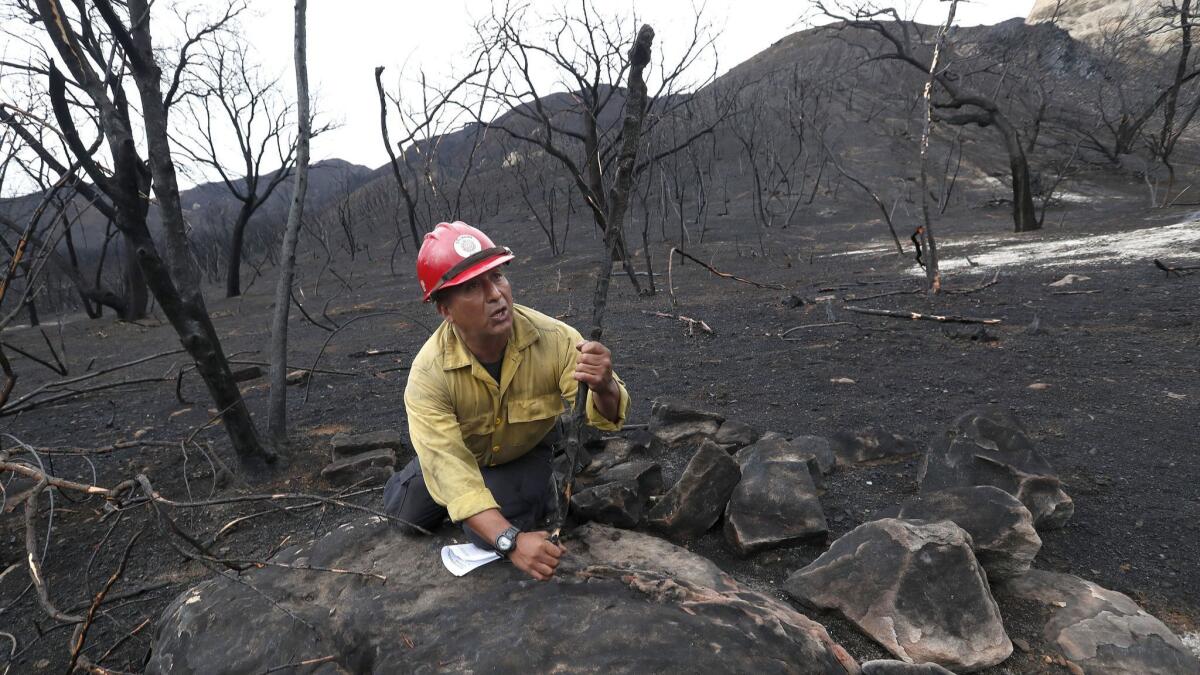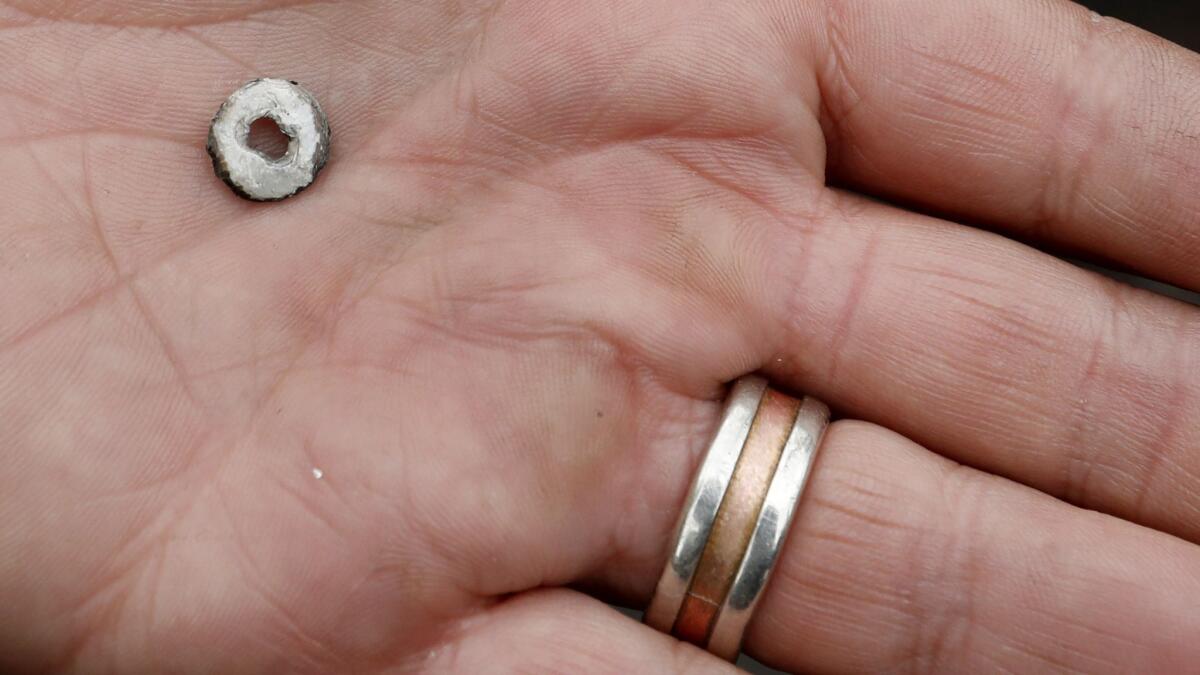Chumash firefighters search for signs of Native American past in Woolsey fire burn scar

- Share via
It had been weeks since the Woolsey fire tore through the Santa Monica Mountains, and Gilbert Romero walked carefully beneath a scorched canopy of live oak trees.
Romero, a fire captain with the Santa Ynez Band of Chumash Indians, passed a circle of rocks to his left and the bones of a blackened deer carcass to his right. He then knelt on the sooty ground near a pile of rocks and began sifting dirt through his fingers. A light rain had been falling all morning.
Romero raised his hand, and there, clasped in his fingers, was a bead. He snapped a photo with his phone and put it back in the dirt.
“You never know what the rain is going to reveal,” said another Chumash firefighter, Richard “Quntan” Garcia. “We keep adding to the record.”
Garcia, Romero and engineer Nelson Palto were there in the charred valley to inspect some of the 568 known Native American sites that fall within the burn scar for the Woolsey fire, which scorched 96,949 acres, including more than 88% of the federal land in the Santa Monica Mountains National Recreation Area.

The men are part of an interdisciplinary group of government scientists and fire professionals known as a burned area emergency response team. The teams assess what damage has been done to cultural and natural resources and what threats lie ahead.
Biologists, for example, examine how fire has changed the habitat for such animals as the rare red-legged frog. Hydrologists study burned watersheds to see how severe mud and debris flows might be when rain comes.
And then there are the Chumash firefighters. They not only check the condition of known Native American sites, but also gather what information they can about the past.
“They can tell you who was there, how long they were there, where they came from, who they traded with, what they ate,” Garcia said about artifacts scattered in the mountains. “It kind of tells a story.”
Fires offer a rare opportunity to look back in time. The dense vegetation that obscured some sites has been burned away, exposing new clues about the past.
Garcia went out earlier this month to scout a site that archaeologists had known about for decades, but which he said had not been formally surveyed since the 1970s. The reason? The site had been covered in dense poison oak.
There were ranch features around the site, including the foundation of an old stone cabin with the name of a European settler. There were also clues to Native Americans who might have lived there, including a circle of rocks Garcia speculated could have functioned as a place for ceremonies.
Based on the discovery of the shell bead, Gary Brown, the cultural resource program manager at the National Recreation Area, said the earlier occupation near where the bead was found was probably Chumash, dating between 1540 and 1800.

Every find Garcia and the others make will add to archaeologists’ knowledge of the area.
Brown said six Chumash villages that were occupied at the time of European contact are within the burned area, and about 229 of the Native American sites are on park service land.
Numerous Native American sites were affected by the wildfire, Brown said. One known painting was severely damaged, but assessments are still underway.
The fire did worse damage to man-made structures.
A museum building that housed boxes full of thousands of Native American artifacts burned down.
The boxes were destroyed, and many of those artifacts — including shells, rocks and bone — fell to the ground and are now in buckets at the park’s offices.
Archaeologists must sort what remains and determine how to preserve it for the future, said Ann Stansell, an archaeologist with the National Park Service.
“These sites contain a lot of the memories of our folks,” Garcia said. “These are stories that are in these buckets.”
Romero compared their job to a treasure hunt. But knowing that the artifacts they are searching for are tied to his people’s story adds another layer to the task.
“It definitely grounds you, it is kind of hard to describe,” he said. “It is a proud moment. Just knowing we are doing something to preserve that for the future.”
Twitter: @jpanzar
More to Read
Sign up for Essential California
The most important California stories and recommendations in your inbox every morning.
You may occasionally receive promotional content from the Los Angeles Times.














